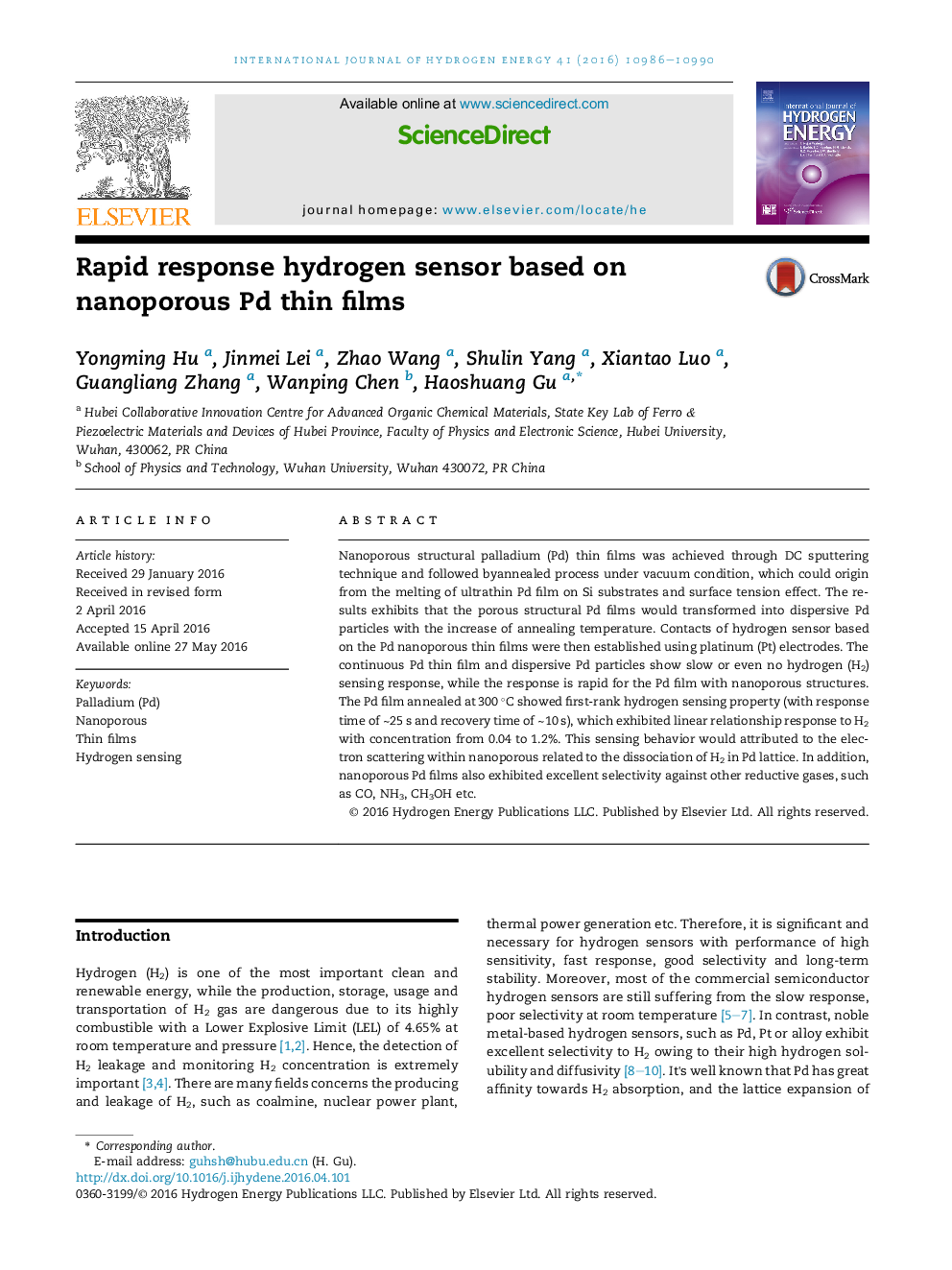| Article ID | Journal | Published Year | Pages | File Type |
|---|---|---|---|---|
| 1276823 | International Journal of Hydrogen Energy | 2016 | 5 Pages |
•Nanoporous Pd films were obtained by DC sputtering and followed by heat treatment under vacuum conditions.•Nanoporous Pd films show fast room-temperature response to H2 with concentration from 400 ppm to 1.2%.•Nanoporous Pd films show great selectivity for H2 against other reductive gases.
Nanoporous structural palladium (Pd) thin films was achieved through DC sputtering technique and followed byannealed process under vacuum condition, which could origin from the melting of ultrathin Pd film on Si substrates and surface tension effect. The results exhibits that the porous structural Pd films would transformed into dispersive Pd particles with the increase of annealing temperature. Contacts of hydrogen sensor based on the Pd nanoporous thin films were then established using platinum (Pt) electrodes. The continuous Pd thin film and dispersive Pd particles show slow or even no hydrogen (H2) sensing response, while the response is rapid for the Pd film with nanoporous structures. The Pd film annealed at 300 °C showed first-rank hydrogen sensing property (with response time of ∼25 s and recovery time of ∼10 s), which exhibited linear relationship response to H2 with concentration from 0.04 to 1.2%. This sensing behavior would attributed to the electron scattering within nanoporous related to the dissociation of H2 in Pd lattice. In addition, nanoporous Pd films also exhibited excellent selectivity against other reductive gases, such as CO, NH3, CH3OH etc.
